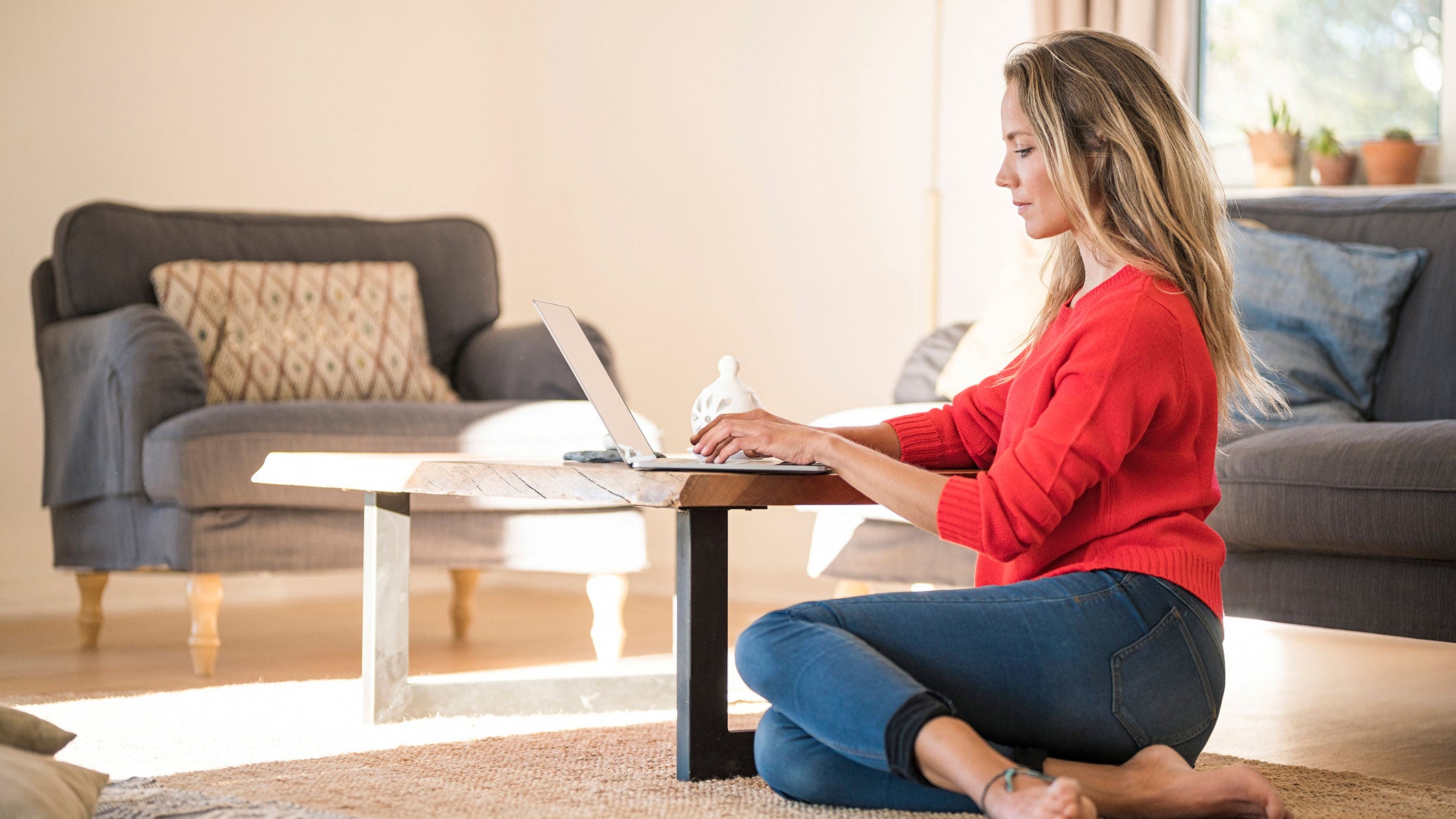What Quarantine Training Is Doing To Your Body (And How to Fix It)

We are finding ourselves in unusual and unprecedented times adjusting to the “new normal.” While some may be finding staying at home a welcomed change of pace, many triathletes are struggling to develop routines that allow them to train and prepare for resuming racing while adhering to government restrictions and new work situations.
While many triathletes are either working from home, underemployed, or unemployed, they’re also prohibited from swimming in pools and going to gyms, while sometimes overtraining on indoor bike trainers and increasing run volume. This jarring contrast between sedentary and overtraining is creating some of the following quarantinjuries:
Quarantine training = Increased time sitting
While working at the office, the day involves going to see a colleague, heading to the water cooler/break room, dropping off/picking up mail, and other routines that get you out of your ergonomic chair and workstation to move around. At home, many of us have created temporary make-do home offices that do not resemble the support we typically have at the office. Or even worse, work from the couch, recliner chair, or yes…in pajamas and in bed. None of the above is conducive to good joint and muscle health.
What it does:
Poor posture and ergonomics lead to spinal stiffness and pain, tension headaches (forward head posture), and tightness in your hip flexors and calf musculature
What you need:
- A foam roller (we like those from Rollga and Triggerpoint) to loosen those tight joints and muscles
Stretches:
- Upper trapezius stretch for neck
- Standing calf stretch
- Laying on stomach quadriceps/hip flexor stretch with foam roll assist
Quarantine training = Increased time on the trainer
This sounds like it should be a benefit of quarantine, right? Not necessarily.
When riding outdoors, you shift around on your bike, stand up periodically, and you have physiologically adapted to that on-road position on the bike. While on a trainer, you remain in a static position for extended periods of time. If you are using a different bike dedicated to the trainer than the one you typically ride on the road, you could also be creating a problem, as your position has become adapted to that different setup.
What it does:
Increased perineal pressure (saddle sores), increased hip flexor recruitment (prolonged flexed position), potentially asymmetrical muscle activity (if trainer is not set up correctly)
What you need:
- A simple trainer front wheel block (or this very not-simple one)
- Realistic road like mobility (Kurt Kinetic trainer or the Saris MP-1 Nfinity platform)
- Leveler (from any hardware store)
- Make sure your bike on the trainer is equivalent to its position on the ground with a wheel block. Also, check for lateral balance—that’s what those snazzy dials on the legs of the trainers are for.
- Don’t skimp on chamois cream just because you are indoors
- If you do use a bike for the trainer other than your typical training/racing bike, do your best to get your fit as equal as possible. A little investment in the proper stem and saddle will pay dividends in comfort and injury prevention.
Stretches:
Quarantine training = Increased time on your couch
The “couch and slouch” posture adopted by fellow quarantinees everywhere results in a cluster of problems that will affect your current and future training. Your best friend is the timer on your phone—set it for every 30 minutes to get up and move—do some squats, sun-salutations, walk to the kitchen to get some water—just pry yourself off the couch!
What it does:
Weakens paraspinal musculature (the muscles running along your spine that provide support for your back), stiffens thoracic (mid back) spine, and tightens multiple muscle groups such as the hip flexors and calf.
What you need:
- Foam roller
- Yoga stretch strap
Stretches/Exercises:
Quarantine training = Increased time running
Again, this sounds like a good thing, however, a rapid increase in volume of running simply to fill the time you no longer spend commuting can be hard on the joints. With the increase in sitting time, your gastrocnemius and soleus muscles (calf musculature) and subsequently the Achilles tendon are going to shorten. Combine that with muscles ill-equipped to handle the sudden increase in demand, and you have the recipe for injury.
What it does:
The small supportive muscles of your foot and lower leg are not strong enough for the increased workload. Combine that with muscle tightness and you may develop plantar fasciitis or shin splints
What you need:
- Supportive, cushioned trainers
- Yoga stretch strap
Stretches/Exercises:
- Towel toe crunches
- Single-leg balance standing leg circles
- Standing calf stretch or stretch strap assist
Quarantine Training = No Swimming
Swimming not only provides great aerobic exercise, but it also helps maintain good spinal mobility and strengthens the muscles that support your head and back—all while avoiding weight-bearing impact on the joints.
What it does:
Loss of cervical and thoracic spine rotation, weakened paraspinal musculature, weakened gluteals (from no kicking)
What you need:
- Swiss Ball
- Resistance Bands